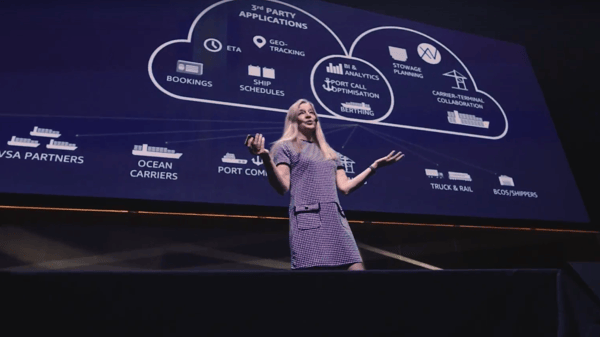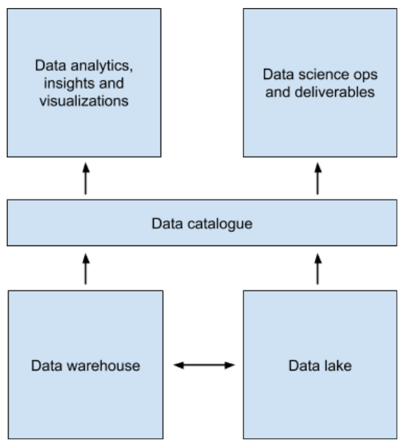
5 Things Growth Companies Can Learn From Amazon
BrandBastion’s Top 5 Takeaways from the AWS Summit 2018
Earlier this month, the team at BrandBastion joined attendees at the AWS Summit Stockholm 2018 to learn, be inspired, and connect with others in the industry.
Data Science Lead Evgeny Maryaskin shares with us his insights, observations, and key learnings from the event:
1. “Today’s goal is education, not sales”
During his keynote, VP & CTO of Amazon.com Dr. Werner Vogels emphasized the need for B2B companies like Amazon to focus on educating customers and equipping them with tools, instead of focusing on sales. The goal is to help customers have their solutions be “well architected” in terms of operations, security, reliability, performance and cost aspects.
Using the analogy of building a house, Dr. Vogels explained that Amazon calls their target audience “builders”. He claims the goal is not to tell people how to do what they need to do, but to give right tools so they will be able to build whatever they want.
“The question is not if your company will migrate to the cloud. The questions are when and how fast.”
“We’re not arrogant to tell you how to build your house. It’s your job. We only make sure you have the right tools.”
2. Let your customers (and their results) do the talking for you
Client names were mentioned all the time. Netflix, specifically, was mentioned at least 5 times during the sessions I attended. Throughout the conference, AWS customers were featured in almost all the sessions and representatives joined keynote presenters on stage to speak about specific case studies. While the customers spoke highly of AWS solutions, they also shared plenty of challenges they faced which required trade-offs and workarounds, which kept the sharing honest and genuine.
3. Start from the customer and go backwards
During the conference, James Wood, AWS Startup Account Team Lead, shared some fascinating insights into Amazon’s reverse approach to innovation. Before they build anything, they go through these steps:
- First, write a press release defining what success would look like.
- Next, write down FAQs of what customers will ask when the innovation is released.
- Create a user manual describing how people will use the innovation.
- Only then start thinking of architecture.
This reverse-engineered process is not very intuitive but it has worked for the multibillion dollar giant so far! While Amazon now hires over 566,000 people worldwide, they try to retain the startup culture they were founded on. They believe this is what drives their innovation.
“Our mission is to be the Earth’s most customer-centric company.”
“Put the customer first, invent, be patient.”
4. Make friends with your legal and compliance team
Now that the EU’s General Data Protection Regulation has come into force on May 25, 2018, compliance is an issue looming large in the minds of many.
“The most important rule is to make friends with your legal team and your compliance team. No one else can tell you for sure if you’re safe.”
During the conference, Paul Ahlgren, Partner Solutions Architect and Henrik Johansson, Principal CISO explained their perspective on the GDPR: their take is to consider all the users be under GDPR and apply the same policies for everyone.
The emphasis was that data protection was an ongoing, active process, not a “quality stamp” that you receive once nor just a policy document. There must be a real process of the ongoing validation and companies should be ready to show reports detailing this process at any time.

Some of the impressive tools shared by AWS to help manage data protection include:
- A dedicated security module that controls access to data.
- Monitoring tools from the AWS ecosystem: CloudTrail, Inspector, Macie, Config to log all API calls so that activity is traceable
- GuardDuty: A ML tool that detects abnormal activities in your logs and reports it to you with alerts. It also pinpoints specific parts of logs so you don’t need to look through all of them.
- Macie: Recognizes potentially sensitive data in your files: PII, IP, AWS account information, and so on so you can investigate if action needs to be taken.
“Encrypt everything. There are no reasons to not do it.“
5. Catalog the data you store, so you are not investing in maintaining “dark data”
In two separate sessions touching on many similar issues, Solutions Architects Johan Broman and Sara Mitchell highlighted AWS’ observation that a lot of data stored is not used. From AWS’ research, they observed that in 1997, almost all the data that companies stored was utilized.
As awareness grew about the many different ways to use and benefit from data, companies started exponentially growing their amounts of stored data. The data an average company stores now is estimated to be seven to eight times more than 20 years ago. However, the amount of data that is actually used has only increased by 20%.
In other words, there are huge amounts of data that companies store (and invest in maintaining) but never really benefit from. AWS calls this dark data. Their recommendation? Having a data catalogue that describes what data you have in a streamlined manner. This is the key to start actually using your data more intelligently and cut down the volume of dark data.
Here’s a simple diagram of what their recommended data architecture should look like:
